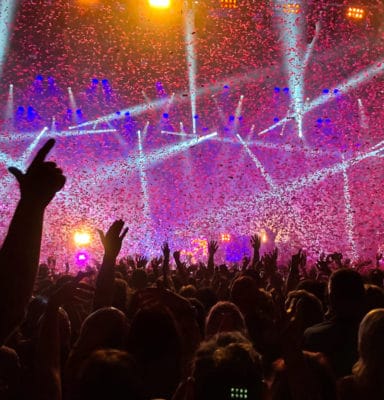Live events are again in flux. Depending on where you are in the world, your in-person trade show or conference could be anywhere from full steam ahead to on the verge of cancellation. Use this checklist to make sure you’ve done all you can to ensure a safe working environment for your in-person participants and staff. Without them, the show can’t go on.
Venue
- Accreditation: Choose venues—convention centers and hotels—that have received certification from the Global BioRisk Advisory Council (GBAC).
- Ventilation: Even though your venue of choice features windows and doors that open to the outside, you may need to have a deeper discussion with them about air circulation.
- Outdoor space: Look for facilities with outdoor meeting spaces for breakouts, networking functions, and even wellness activities.
Policies and procedures
- Handwashing: Promote personal hygiene whenever and wherever you can.
- Social distancing: Plan to disperse seating, increase aisle width on the exhibit floor, or create multiple keynote address overflow rooms where attendees can spread out.
- Masks: Determine your masking policy, including whether face masks are recommended or required and whether or not cloth masks (vs. N95 masks) are permissible. Consider distributing branded masks instead of tote bags to attendees.
- Vaccination: While some cities are beginning to require proof of immunization to enter a public building, plenty of municipalities leave the question up to organizers. Weigh Centers for Disease Control and Prevention (CDC) guidance, the good of the live-event industry, and the welfare of your participants when you determine your vaccination policy.
- Rapid testing: Some groups may not want to require proof of vaccination. A fallback position requires proof of a negative Covid-19 test or to perform rapid testing onsite.
- Limit in-person attendance: Find ways to make your event more exclusive. Think of focusing your attendee acquisition campaigns on specific groups. (CEOs, buyers only, VIPs) Consider a hybrid extension for attendees that fall outside your target segment.
- Communal dining, breaks, buffets: Find ways to feed your participants that don’t involve congregating in small spaces.
- Networking: By increasing the networking area, reducing the noise levels, and more, keeps networkers close enough but not too close.
- Partnerships: Work with your partners, including your AV contractor, to help maintain health standards.
Technology
- Touchless devices: Choose from various touchless technologies to reduce contact with potentially infected surfaces.
- Sanitizing stations: Providing hand sanitizer is a thoughtful way to protect participants.
- Smart badges: Use smart badges to notify attendees when standing too close.
- Temperature kiosks: Consider facial recognition and thermal scanning technology to help screen attendees before entering the event.
- Access control: Whether you use scanners or sensors, track everyone entering a room in case you have an outbreak and need to perform contact tracing.
- Mobile apps: Work with your mobile app provider if you decide to accept vaccine passports or other forms of proof available via mobile devices.
- Chatbots: Take advantage of AI-based chatbots to help screen for Covid-19 symptoms.
- Facial recognition: Speed up check-in using facial recognition, which recognizes attendees and prints a badge as soon as they step in line to reduce potential Covid-19 transmission time.
Communication
- Public relations: Empower your PR team to use their skills and channels to inform participants of your steps to help ensure their safety.
- Website: Create a landing page on the event website to post real-time updates (including positive test results) during and after the event.
- Signage: Use directional and informational signs to safely help attendees navigate your event and reinforce important health messages.
Personnel
- Covid concierge: Put someone in charge of answering attendee questions and handing out masks, hand sanitizer, and surface wipes.
- Security: Leave the task of checking vaccination status to trained security professionals.
- Medical staff: While Covid alone shouldn’t require an abundance of onsite emergency personnel, consider a visible presence of medical professionals to offer attendees peace of mind.
- Contract with a qualified infectious disease professional to monitor CDC guidance, weigh-in, and sign-off on your event safety protocols.
Apart from the business case for implementing a safe event strategy, a safe event delivers other benefits. It helps organizers meet duty-of-care obligations.
A strategy that incorporates as many of these checklist items as is feasible will significantly benefit your organization and event attendees.
Learn more about how SmartSource® can help you with your safe event strategy. And should your event need to go virtual, we’ve got you covered there too.

